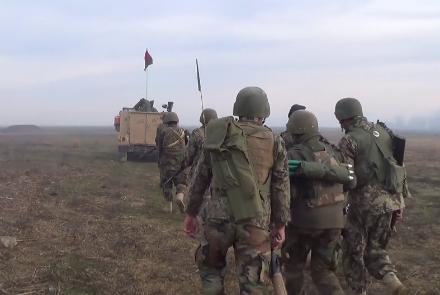A survey by TOLOnews shows that administrative units in 64 districts in 19 provinces are either operating outside the premises of the districts or have been relocated.
Based on the survey, Faryab with nine, Ghazni with eight, and Farah and Helmand with seven districts are the top of the list where provincial offices are not working in their original place.
Other districts which are run from outside their premises are:
• Maroof, Mianshin, Nesh and Ghorak districts in the southern province of Kandahar;
• Giyan, Nika, Gomal and Cha Baran in Paktika, Gul Tepa, Kalbad, Aqtash, and Dasht-e-Archi districts in the northern province of Kunduz;
• Burka, Tala-Wa-Barfak, and Daha-e-Ghori districts in the northern province of Baghlan;
• And Naw Bahar, Arghandab and Khak Afghan districts in the southern province of Zabul.
The survey shows that district governors are not working in at least two districts in Uruzgan, Nangarhar, Badakhshan and Logar provinces.
Also in Sar-e-Pul, Badghis, Khost and Jawzjan provinces, there is one district where administrative units are not working, the survey shows.
The survey shows that district governors are working in their districts in only 15 provinces. However, the government institutions are not working in some regions of the fifteen provinces.
Darqad district in Takhar is one of the districts where judicial organizations are operating from the capital of the province instead of working in their original places.
A number of district governors confirmed the findings of the survey and said they rarely visit their working areas in the districts.
Shirzad district governor Mubariz Khadim said that fighting often breaks out in the districts even few meters away from the government installations and that the land route to the district is closed because of the fighting between Daesh and Taliban militants.
“I travel to the area by helicopter when needed,” Khadim said. “Sometimes it takes two months, sometimes in three months, sometimes in six months. It depends on the airplanes to come and transfer us there.”
“We are working more in Hesarak. Here, we get more applications. We have an office here and settle down people's problems,” said Mohammad Hassan Osmanzai, the governor of Nangarhar’s Hesarak district.
Figures by Independent Directorate of Local Governance, or the IDLG, show that neither the civilian nor the military institutions are operational in at least 20 districts across the country, including Sherzad and Hesarak districts in the eastern province of Nangarhar which is lying only a few kilometers away from the capital Kabul.
“We have district governors for these districts, but they are not working there in the districts. Officials of judicial organizations are not willing to go and work there because of security threats. Similarly, we do not have army, police and NDS forces there [in those districts],” the IDLG spokesman, Sayed Shah Saqim.
“All district governors will go to their areas once these areas liberated,” the Defense Ministry spokesman Rohullah Ahmadzai said.
“Government needs to expand its authority 100 percent so that justice can be served. Whenever the Constitution of Afghanistan is not implemented in some areas, then it brings challenges ahead,” said Sayed Azim Kibrzani, an MP.


